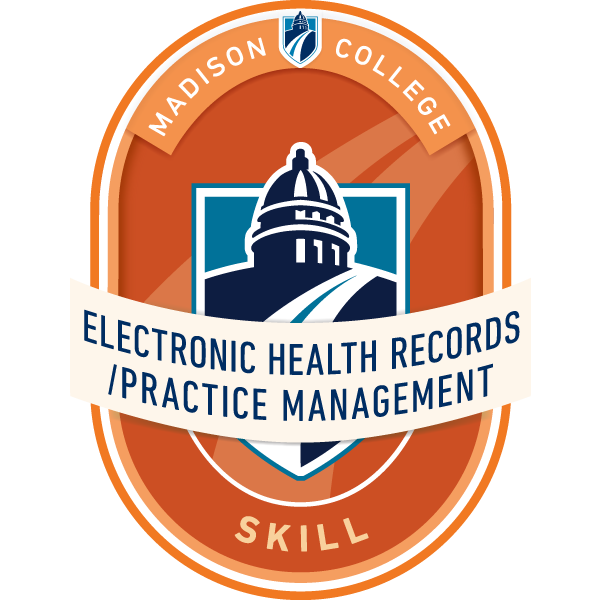Background
At Madison College, we have a long history of issuing digital badges, first on the non-credit side and now in credit courses. We were one of the first technical colleges in the country to award badges on such a large scale. In 2017, badges in credit courses numbered 69 and by 2020 (yes, even during a pandemic) that amount skyrocketed to 1,446. We project nearly 2,000 in 2021!
Today’s Learning Landscape
Digital badges fit perfectly into a remote learning model. With emergency closures of school buildings due to the pandemic, instructors yearn for ways to engage and motivate students in a remote environment. Since 2016, we knew badges were 100% of value to students (based on our own survey) and that 40% of students were more motivated in class and eager to earn a badge. The increase in numbers proves they are still of value; they provide essential motivation during remote learning.
What are Badges?
Defined as a digital emblem of skills, badges represent skills directly assessed by an instructor at a given point in time during a credit course. They are not a result of self-assessment or computer scoring. Designed using performance-based principles, they are adaptable and mimic real-life assessments, if designed carefully.
How do Badges Support Authentic Assessment?
When aligning badge design to the ideas laid out in Adam Shaw’s article Authentic Assessment in the Online Classroom (2019), there are striking similarities. Below, I summarize Shaw’s design steps and compare them to digital badge design and assessment.
| Steps in Authentic Assessment Design | Digital Badge Design |
|---|---|
| Identify Learning Objective | Same. Measurable and observable objectives are the starting point and should be explicitly stated in advance of instruction. |
| Define Relevant Tasks | Same. What will the student produce or what process will be demonstrated? Write clear directions and activities, including links to instructional materials and the process for submission. |
| Identify Essential Performance Criteria | Same. Performance criteria usually accompany a learning objective and describe what a successful product or process looks like (number of errors, organization, a main idea, degree of accuracy in grammar, punctuation or spelling, product is within specific industry tolerances, etc.) These form the basis of a rubric. |
| Develop a Rubric | Same. Rubrics include the performance criteria but add a scoring layer. What is the minimum “score” required for earning a badge? In our case, badges are not awarded for every passing grade. They serve as credentials for exemplary performance. |
As Shaw points out, it takes time to develop a relevant, robust assessment that mimics work or other life roles–especially those “scaffolded over a number of modules or some other period of time.” He describes complex performances like scenarios or other practices as being “realistic and sometimes messy.” Is it worth it to detangle the messiness and capture success as a portable credential? We think so. Especially if the students are engaged—something difficult to come by in our time of evolving work locations. As long as high performance expectations remain, digital badges might just lead the way in authentic assessment innovation.





0 Comments